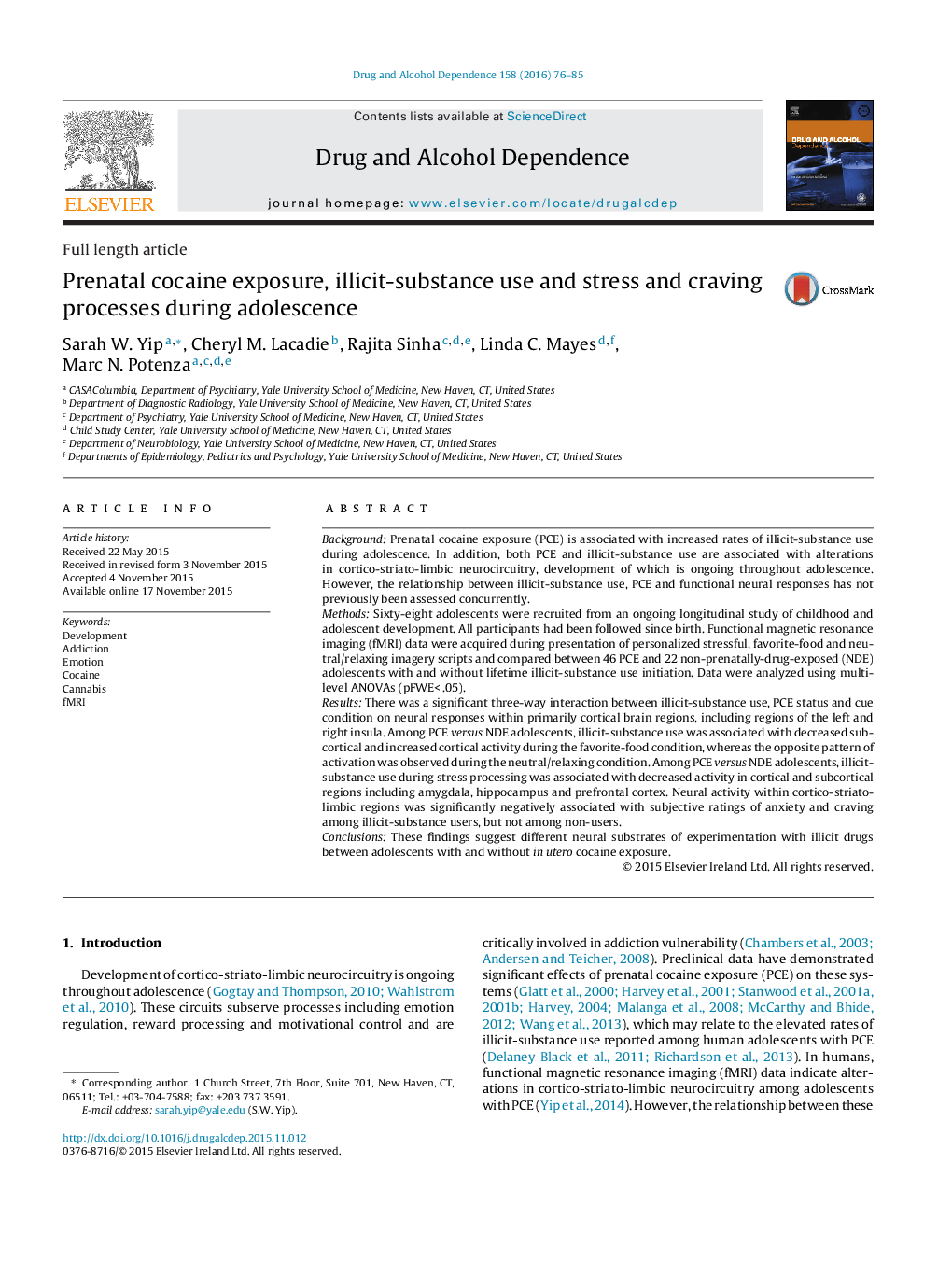| کد مقاله | کد نشریه | سال انتشار | مقاله انگلیسی | نسخه تمام متن |
|---|---|---|---|---|
| 1069742 | 1486133 | 2016 | 10 صفحه PDF | دانلود رایگان |
• Prenatal cocaine exposure (PCE) is associated with increased rates of illicit-substance use.
• Main and interactive effects of illicit-substance use on neural responses assessed in a sample of 68 adolescents with and without PCE.
• Findings suggest different neural substrates of illicit-substance use between adolescents with and without in utero cocaine exposure.
BackgroundPrenatal cocaine exposure (PCE) is associated with increased rates of illicit-substance use during adolescence. In addition, both PCE and illicit-substance use are associated with alterations in cortico-striato-limbic neurocircuitry, development of which is ongoing throughout adolescence. However, the relationship between illicit-substance use, PCE and functional neural responses has not previously been assessed concurrently.MethodsSixty-eight adolescents were recruited from an ongoing longitudinal study of childhood and adolescent development. All participants had been followed since birth. Functional magnetic resonance imaging (fMRI) data were acquired during presentation of personalized stressful, favorite-food and neutral/relaxing imagery scripts and compared between 46 PCE and 22 non-prenatally-drug-exposed (NDE) adolescents with and without lifetime illicit-substance use initiation. Data were analyzed using multi-level ANOVAs (pFWE< .05).ResultsThere was a significant three-way interaction between illicit-substance use, PCE status and cue condition on neural responses within primarily cortical brain regions, including regions of the left and right insula. Among PCE versus NDE adolescents, illicit-substance use was associated with decreased subcortical and increased cortical activity during the favorite-food condition, whereas the opposite pattern of activation was observed during the neutral/relaxing condition. Among PCE versus NDE adolescents, illicit-substance use during stress processing was associated with decreased activity in cortical and subcortical regions including amygdala, hippocampus and prefrontal cortex. Neural activity within cortico-striato-limbic regions was significantly negatively associated with subjective ratings of anxiety and craving among illicit-substance users, but not among non-users.ConclusionsThese findings suggest different neural substrates of experimentation with illicit drugs between adolescents with and without in utero cocaine exposure.
Journal: Drug and Alcohol Dependence - Volume 158, 1 January 2016, Pages 76–85
